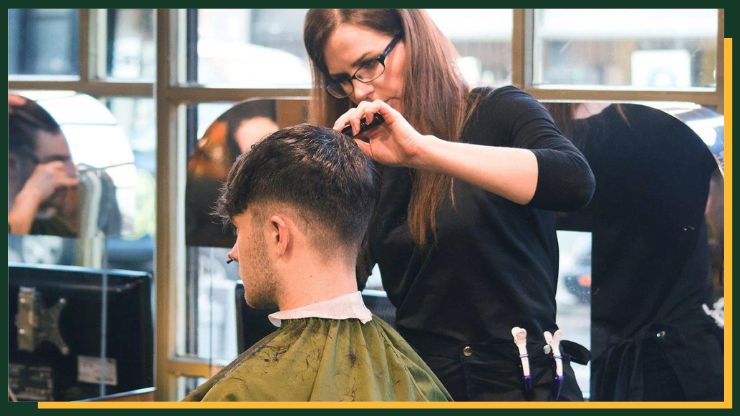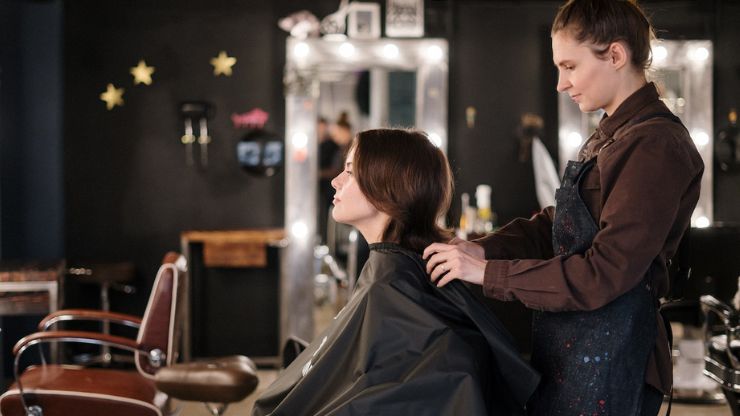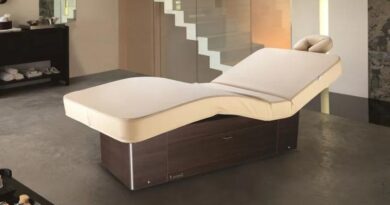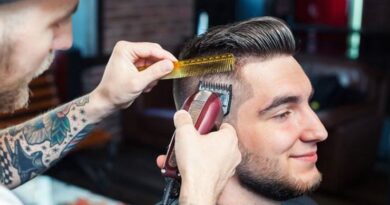How much do barbers pay for a chair – The barber industry is a dynamic and ever-evolving field, attracting both new and seasoned professionals. For barbers, renting a chair in a barbershop or salon is a common practice, allowing them to establish their clientele and grow their businesses. Understanding the costs associated with chair rental is crucial for both aspiring and experienced barbers, as it can significantly impact their profitability and overall success in the industry.
This outline aims to delve into the key factors that influence chair rental costs, including location, salon quality, barber experience, and demand. It will explore different rental arrangements, such as fixed rent, commission-based models, and hybrid options. Additionally, we will examine the average chair rental costs and associated expenses, providing insights into how barbers can negotiate favorable rental terms and ensure a successful career in this vibrant and competitive industry.
Types of Chair Rental Arrangements
I. Fixed Rent
A. Monthly or Weekly Rent
1. Barbers pay a consistent, predetermined amount on a regular basis (e.g., monthly or weekly).
2. Provides stability in budgeting and financial planning.
B. Stable Costs
1. Barbers have a predictable cost structure, which can make it easier to manage expenses.
2. Allows for better control over overhead costs.
II. Commission-Based
A. Percentage of Earnings
1. Barbers pay a percentage of their earnings to the salon or barbershop owner.
2. The percentage varies but is often based on a predetermined arrangement.
B. Variable Income
1. The cost fluctuates with the barber’s earnings, which can be beneficial during slower periods.
2. Barbers may pay a higher fee when their income is higher.
III. Hybrid Models
A. Combination of Fixed and Commission-Based
1. Barbers pay a base fixed rent while also contributing a percentage of their earnings.
2. Provides a balance between stability and variable costs.
B. Flexibility for Barbers
1. Allows barbers to manage their costs while still participating in the salon’s overall success.
2. May be negotiated to suit the specific needs of individual barbers.
Also, Read – Cheap Barber Chairs for sale
Average Chair Rental Costs

The average chair rental costs for barbers can vary widely depending on factors such as location, salon quality, and other local conditions. It’s important to note that these figures are approximate, and actual costs may differ significantly. Here are some general ballpark figures as of my last knowledge update in 2022:
- Low-End Salons and Barbershops:
- In less expensive areas or budget-friendly salons, chair rental costs might range from $100 to $300 per week.
- Mid-Range Salons and Barbershops:
- In more moderate areas or establishments offering mid-level services and amenities, chair rentals may average between $300 to $600 per week.
- High-End Salons and Barbershops:
- In upscale or high-end salons with premium services and luxurious amenities, chair rental costs can be significantly higher, ranging from $600 to $1,500 or more per week.
- Commission-Based Models:
- In commission-based models, barbers often pay a percentage of their earnings (e.g., 40% to 60%) as their rental fee.
- Hybrid Models:
- Hybrid arrangements that combine a fixed base rent with a commission percentage can vary widely, depending on the specific terms negotiated with the salon owner.
It’s crucial for barbers to conduct local market research and inquire with prospective salon owners to get accurate, up-to-date information on chair rental costs in their specific area. These costs can fluctuate based on factors such as the local economy, competition, and demand for barber services. Additionally, experienced barbers with a substantial client base may have more negotiating power when determining their rental fees.
Additional Costs
In addition to chair rental costs, barbers may encounter several additional expenses when operating their businesses. These costs can significantly impact their overall profitability and should be considered when budgeting and planning. Here are some common additional costs:
- Utilities and Amenities:
- Electricity and Water: Barbershops may require barbers to contribute to the costs of utilities.
- Internet and Phone: Fees for phone and internet services used for scheduling appointments and managing the business.
- Amenities: Costs for providing amenities like coffee, refreshments, magazines, and entertainment for clients.
- Product and Equipment Expenses:
- Barbering Supplies: The cost of haircare products, styling tools, and consumables used during services.
- Equipment Maintenance: Regular maintenance and replacement of barbering tools and equipment.
- Product Liability Insurance: Coverage for potential product-related liabilities.
- Marketing and Advertising:
- Advertising and Promotion: Expenses for marketing materials, online advertising, and promotions to attract and retain clients.
- Business Cards and Flyers: Printing and distribution costs for promotional materials.
- Online Presence: Costs for maintaining a website, social media presence, and online listings.
- Insurance:
- Business Insurance: Liability and property insurance to protect against accidents and property damage.
- Health Insurance: Health insurance for self-employed barbers and their families.
- Disability Insurance: Coverage in case the barber is unable to work due to injury or illness.
- Licensing and Permits:
- Barber License Renewal: Fees associated with renewing and maintaining the required professional licenses.
- Permits: Any local permits or licenses necessary to operate a business.
- Taxes:
- Income Tax: Self-employed barbers must set aside funds for income tax payments.
- Sales Tax: For those selling products directly to customers.
- Renters’ Insurance:
- Personal renters’ insurance to cover personal belongings and provide liability protection.
- Continuing Education:
- Costs associated with attending workshops, seminars, or courses to stay current with industry trends and techniques.
Barbers should carefully budget for these additional costs and factor them into their pricing structure to ensure a sustainable and profitable business. Keep in mind that the specific costs can vary depending on the location, business size, and individual circumstances.
Also, Read – Barber Shop Waiting Chairs
Negotiating Chair Rental Costs
Negotiating chair rental costs is a critical aspect of a barber’s business management. Here are some tips and steps for effective negotiation:
- Research and Preparation:
- Before entering negotiations, research the local market to understand typical chair rental rates in your area. This information will serve as a reference point during negotiations.
- Evaluate your own skills, experience, and client base to assess your value to the salon or barbershop.
- Understand the Lease Agreement:
- Review the lease agreement thoroughly. Understand the terms, including the rental amount, payment frequency, and any additional costs.
- Identify any clauses that provide room for negotiation, such as renewal options, termination policies, or rent increases.
- Build a Compelling Case:
- Highlight your experience, skills, and client base as assets that can benefit the salon or barbershop.
- If you have a strong online presence or a following on social media, emphasize the potential for increased foot traffic and business growth.
- Set Clear Objectives:
- Determine your desired rental rate and any specific terms you want to negotiate, such as rent reduction during slow seasons or adding amenities.
- Be prepared to compromise while staying within your budgetary limits.
- Schedule a Meeting:
- Request a face-to-face meeting with the salon or barbershop owner to discuss the terms.
- Ensure you are professional, well-dressed, and punctual for the meeting.
- Effective Communication:
- Clearly and confidently express your case and reasons for wanting to negotiate the rental costs.
- Listen actively to the salon owner’s perspective and be open to their suggestions.
- Negotiate Beyond Rent:
- If the owner is reluctant to lower rent, explore other areas of negotiation, such as a shorter lease term, shared marketing expenses, or an option for a rent reduction after a certain period.
- Competitive Comparisons:
- Mention any competitive offers or opportunities you may have, which can put pressure on the salon owner to consider your terms seriously.
Remember that successful negotiations often require patience and a willingness to find a mutually beneficial solution. Developing good rapport with the salon or barbershop owner can also improve your chances of reaching a favorable agreement.
Conclusion (How much do barbers pay for a chair)
In conclusion, understanding and effectively managing chair rental costs are paramount for barbers in the dynamic world of the beauty industry. By considering factors like location, salon quality, and client base, as well as negotiating terms, barbers can ensure a profitable and sustainable business. It’s vital to remain adaptable and open to change while striving to maintain professionalism and a commitment to providing high-quality service. By doing so, barbers can thrive in a competitive market and build successful careers in this rewarding profession.
FAQs
Location, salon quality, barber experience, demand, and specific arrangements all affect chair rental costs.
The average cost varies widely by location and can range from $100 to $1,500 or more per week.
Common arrangements include fixed rent, commission-based models, and hybrid combinations of both.







